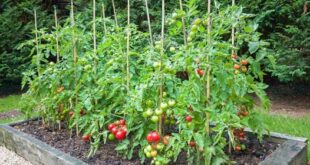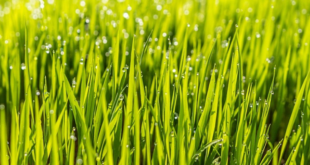Adding mulch to garden beds improves the way your soil behaves across the seasons. It helps keep weeds down, protects delicate roots, and supports moisture retention. However, using it at the wrong time can reduce its benefits or even set your plants back.
Whether you grow vegetables, flowers, or shrubs, applying mulch in line with your garden’s natural cycle makes a real difference. With a good routine, you can avoid waste, reduce maintenance, and support strong growth.
Timing your bark mulch application properly ensures each layer supports your plants rather than working against them. The type of mulch you choose also has an impact, different materials suit different needs.
Seasonal Timing Makes All the Difference
Spring is an ideal time to apply bark mulch. Getting it down before weeds appear means you can suppress them before they germinate, helping your plants establish quickly. Warmer soil temperatures also encourage early root development when protected with mulch.
In autumn, it provides insulation after you’ve cleared spent plants and cut back perennials. This stabilises the soil and protects roots from rapid temperature changes. It also helps preserve soil structure through the colder months.
To achieve this, consider using materials such as bark and woodchip for landscaping for reliable results. They offer a good mix of texture and durability, and are well-suited for beds, borders, and wider garden projects.
Weather and Garden Conditions Affect Results
Soil temperature and moisture levels influence when bark mulch will work best. Wait until the soil has warmed to at least 10°C in spring. If applied too early, mulch may trap cold and excess moisture, slowing down growth.
After rainfall, apply mulch while the soil is still moist but not saturated. In very wet conditions, hold off until water drains. During dry spells, topping up with a light layer helps maintain moisture, provided the soil is well-watered beforehand.
Monitoring your local conditions helps you get the best from each application. This improves the mulch’s performance and reduces the chances of root rot or fungal issues caused by poor timing.
Choosing the Right Type for Your Garden
Shredded bark is perfect for sloped areas, as its fibres lock together and resist being washed away. It breaks down fairly quickly and improves the soil over time.
Bark nuggets, on the other hand, are ideal for low-maintenance beds. They last longer and look tidy, making them a great choice for decorative spaces. If you want something that supports acid-loving plants, pine bark mulch is the best option.
For productive beds like vegetable plots, hardwood bark mulch is a solid choice. It decomposes steadily and adds nutrients. If appearance is important, consider decorative blends, which often come in rich natural tones or colour-enhanced options.
How to Apply Bark Mulch Correctly
In established beds, a 2-inch layer of bark mulch is usually enough. 3–4 inches offers better coverage for new beds or freshly planted areas. Always remove weeds before mulching and consider adding a layer of cardboard for extra weed control.
Keep mulch away from plant stems and tree trunks to prevent rotting. A small gap around crowns and trunks allows air circulation and reduces pest problems. For best results, water the soil before applying mulch so you trap moisture beneath it.
When topping up old mulch, just rake the surface to break up crusting and add a thin fresh layer. Avoid piling mulch too high or spreading it on cold, wet ground, as this can hinder plant development.
Addressing Common Garden Challenges
Using bark mulch in spring is a good way to deal with weed issues. By blocking sunlight, you prevent new seeds from taking hold. If weeds are already present, clear them completely before mulching.
In summer, bark mulch acts as a shield against evaporation. A refreshed layer helps soil retain moisture, especially in beds with shallow-rooted plants. Make sure you water deeply beforehand to lock moisture in.
Certain types also help with pest control. Cedar mulch naturally repels insects, and pine nuggets create a rough surface that slugs and snails dislike. For slopes, shredded bark is more stable than nuggets and stays in place better during heavy rain.
Choosing Sustainable Sources
When sourcing bark mulch, look for UK suppliers who meet recognised environmental standards. Sustainable materials support local forestry efforts and help reduce your environmental footprint.
Products like bark and woodchip for landscaping come in various sizes and formats to suit all kinds of garden projects. Choosing certified options means you can mulch responsibly while enjoying all the practical benefits. This also ensures the mulch you use lasts well, looks clean, and performs reliably no matter the season.
Keep Your Garden Beds Thriving All Year
Using bark mulch at the right time, in the right way, gives your plants the best chance of thriving. You reduce the impact of weeds, retain more moisture, and protect roots against temperature swings. With a little planning and attention to detail, bark mulch can simplify your garden routine and deliver healthy results throughout the year.
 Gardeners Club The Gardeners Club is a free to join online club for everyone with an interest in gardening and gardens.
Gardeners Club The Gardeners Club is a free to join online club for everyone with an interest in gardening and gardens.






